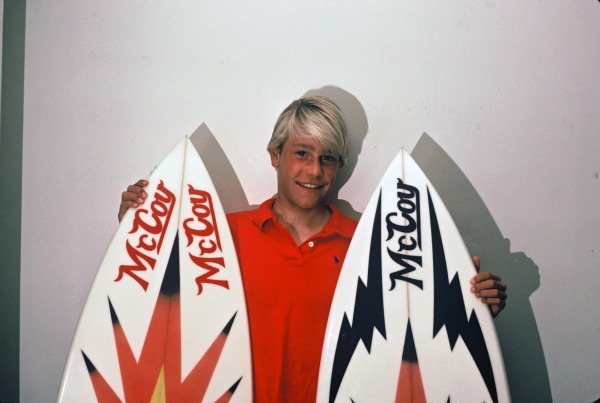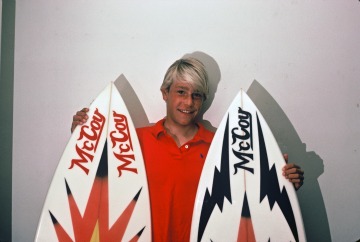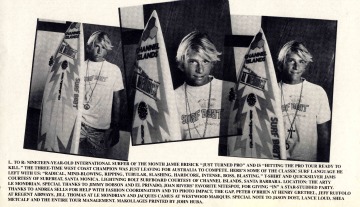
Photo: Jamie Brisick
1. THERE WAS A TIME when skateboards were made of flexible fiberglass and the ball bearings inside the wheels were not encased, but rather free-flowing and anxious to spill all over the garage. These were days of Evel Knievel, H.R. Pufnstuf, Speed Racer, and Farrah Fawcett.


